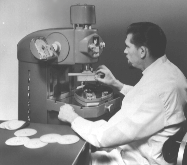Bal-tec™ HomeTantalum Balls or Beads
Tantalum Balls or Beads
Tantalum metal is very soft and ductile, like a blob of metallic putty. Numerous attempts at producing tantalum balls by our would-be competitors have resulted in balls with a layer of foreign particulate embedded in the outer surface. Special procedures must be employed to prevent these particles of abrasive and fragments of the grinding tools from migrating into the surface of tantalum balls.
Bal-tec, a division of Micro Surface Engineering, Inc. is a custom ball manufacturing facility that has been in operation for more than 53 years. We occupy 35,000 square feet in an industrial section of Los Angeles California, USA.
There are always more than one hundred individual lots of precision balls in production at any given time. With this large number of relatively small lots being produced, our deliveries are fast, and our costs are very modest. In addition to our manufacturing prowess, we have an extraordinary computer-controlled quality-control system with an extensive array of expensive and, in some cases, totally unique laboratory measuring equipment. This system is available to assure and document the quality of our finished products.


Precision spheres used for medical applications include balls or beads used as radiographic targets. These balls define the three dimensional position of an area of interest.
The target balls or beads are usually made of either gold or tantalum. The desirable properties here are good radiographic opacity and bio compatibility. The diameter of these target balls or beads is usually either 0.020 inches (0.5mm) or one millimeter, i.e. 0.040 inches. Tantalum balls of any desired size can be produced. These balls or beads require good sphericity and a well-defined diameter.
Balls or beads are used for orthopedic markers.
Orthopedic marker balls, or beads, are always made of tantalum. This material provides excellent radiographic opacity and good bio-compatibility. This material has adequate mechanical properties to withstand the impact of insertion. Tantalum can be used in an MRI device because it is not a ferro magnetic metal.
We have made tantalum balls or tantalum beads for medical applications from 0.014" ( 0.36mm ) to 2 mm ( 0.080 inches ), but there are no real size limitations, except the availability of the raw material. Small quantities of some sizes of tantalum balls are available in stock. Present delivery of production quantities is six to eight weeks based on the current lead-time of the raw material.
Precision balls are used as a closer for medical devices.
Titanium closure balls, for medical apparatus, are usually made of medical grade 2 or of the 6AL4V alloy titanium metal. These small diameter, very precise closure balls are press fit into the openings of a medical device that is ultimately implanted into the human body. The compressive stresses imparted to the ball by press fitting it into an under-sized hole lowers the melting temperature of these balls. This lower temperature melting point helps to localize the liquid phase to the area immediately adjacent to the site of the ball. The fusion, or melting, process usually incorporates a laser heat source. Closure balls are usually one millimeter in diameter, but they can be made in any diameter to suit specific applications.
When Tantalum is implanted in a patient, it must be processed according to specification ASTM F560 (Medical Grade).
See Inventory of Available Tantalum Balls for our products. See also Tantalum Marker Bead Micro Hardness Testing.
